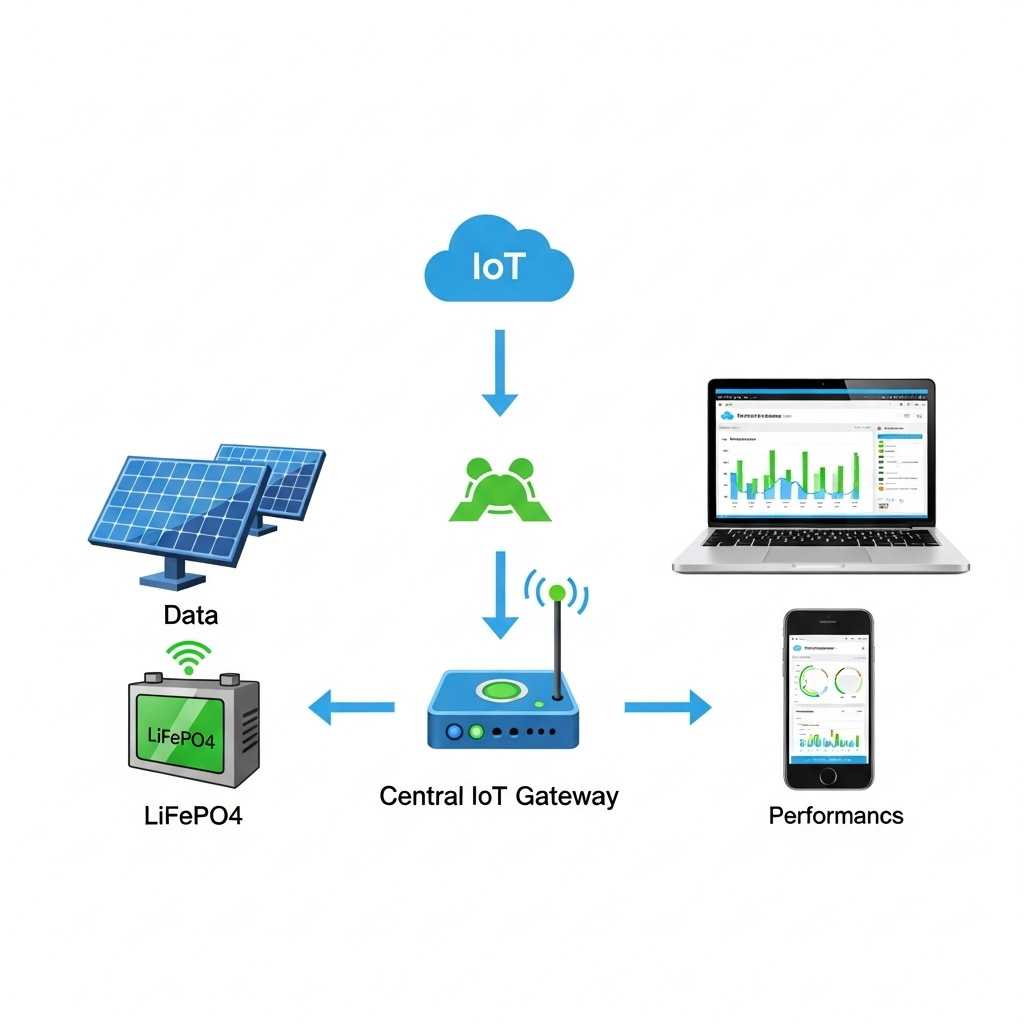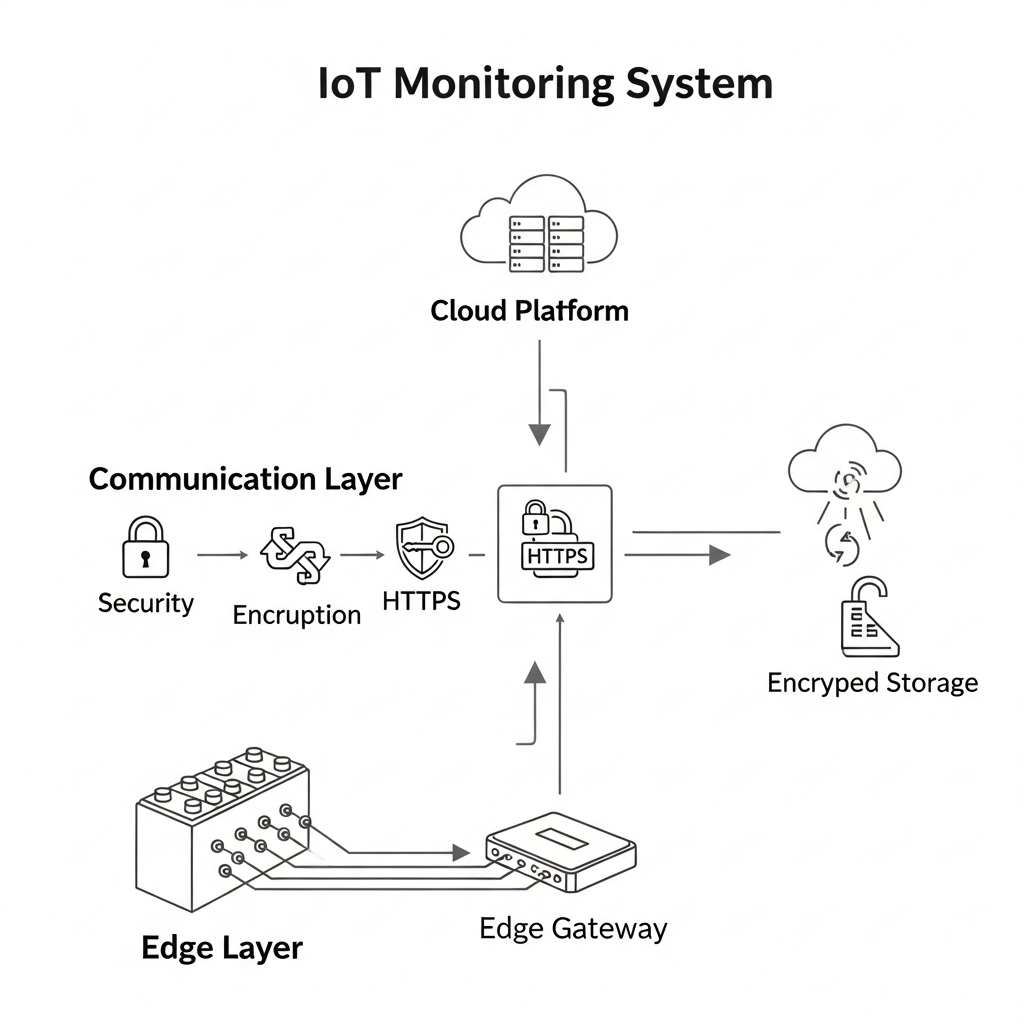As solar and energy storage systems become more connected, their digital infrastructure becomes a critical asset. The Internet of Things (IoT) has revolutionized how we monitor and manage energy resources, but this connectivity introduces new vulnerabilities. Establishing a robust security framework is not just an option; it is a fundamental requirement for ensuring the reliability and safety of our energy infrastructure. This blueprint focuses on two cornerstone technologies: TLS 1.2 and RSA-2048, which form the bedrock of modern Energy IoT security.
Why Cybersecurity is Non-Negotiable for Energy IoT
The convergence of energy systems and digital networks creates immense value, from real-time performance monitoring to predictive maintenance. However, it also expands the attack surface for potential cyber threats. Protecting these interconnected systems is paramount for homeowners and grid operators alike.
The Growing Threat Landscape
Energy infrastructure is a high-value target. A security breach could lead to more than just data loss; it could result in service disruptions, equipment damage, or financial loss. As devices like inverters, batteries, and monitoring gateways connect to the internet, they can become entry points for malicious actors if not properly secured. The U.S. Department of Energy has even funded initiatives to develop specialized hardware, like data diodes, to protect large-scale photovoltaic systems from remote attacks, as highlighted in a report on fending off hackers with low-cost cybersecurity devices.
The Role of Data in Modern Energy Systems
Data is the lifeblood of any smart energy system. It enables everything from optimizing a home battery's charge cycle based on weather forecasts to managing distributed energy resources (DERs) across a virtual power plant. The integrity and confidentiality of this data are crucial. Corrupted or stolen data can lead to poor system performance, inaccurate billing, and a loss of user trust. Therefore, securing the communication channels through which this data flows is a primary objective.
Core Encryption Technologies Explained
To build a secure Energy IoT platform, you need proven, standardized encryption technologies. TLS 1.2 and RSA-2048 are two such standards that work together to create a secure digital environment for your energy assets.
TLS 1.2: Securing Data in Transit
Transport Layer Security (TLS) 1.2 is a cryptographic protocol designed to provide secure communication over a computer network. Think of it as a protected tunnel for your data. When an IoT gateway sends performance data from your solar array to a cloud monitoring platform, TLS 1.2 ensures that this information is encrypted. This encryption prevents eavesdroppers from reading or tampering with the data while it travels across the internet. A key practice is to use only HTTPS TLS 1.2 encrypted outbound connections, typically on port 443, making the device unreachable from the outside.
RSA-2048: The Digital Gatekeeper
While TLS encrypts the data, the RSA algorithm handles authentication. It answers the question: 'Am I talking to the right server?' RSA is an asymmetric encryption system, which uses a pair of keys: a public key to encrypt data and a private key to decrypt it. An RSA-2048 key provides a very high level of security. In the context of IoT, a device uses the cloud platform's public key to verify its identity before establishing a connection. This process, based on a 2048-bit RSA certificate, confirms that your energy data is being sent to the legitimate platform and not an imposter.
How They Work Together in an IoT Ecosystem
TLS 1.2 and RSA-2048 are a powerful combination. Here is a simplified sequence of how they secure a connection:
- Handshake: The IoT device initiates a connection with the cloud server.
- Authentication: The server presents its digital certificate, which is validated using RSA. This proves the server's identity to the device.
- Key Exchange: The device and server securely agree on a symmetric encryption key (like AES-128) to use for the session.
- Secure Communication: All subsequent data is encrypted using the agreed-upon key within the secure tunnel established by TLS 1.2.
This multi-step process ensures both authentication and confidentiality, forming a robust defense for any IoT cloud monitoring solution.
Implementing a Secure IoT Monitoring Architecture
A secure architecture is built on layers of protection, guided by industry best practices and international standards. It involves securing the entire data pathway, from the physical device to the cloud platform.
From Gateway to Cloud: A Secure Pathway
The journey of your energy data begins at the edge—the gateway connected to your inverter and battery. This gateway must be designed to initiate secure, outbound-only connections. This prevents it from being directly contacted or attacked from the public internet. Once the data leaves the gateway, it travels through the TLS 1.2 encrypted tunnel to the cloud. The cloud provider itself should also adhere to strict security standards, such as being EU-US Privacy Shield self-certified, to ensure data is stored securely.
The Importance of Industry Standards and Compliance
Adhering to established standards is a hallmark of a reliable and secure system. The International Electrotechnical Commission (IEC) provides critical standards for the energy sector. For instance, the Grid Codes for Renewable Powered Systems report from IRENA emphasizes how standards like IEC 62056 for electricity metering data exchange are vital for interoperability and system integrity. Furthermore, a study on Quality infrastructure for smart mini-grids points to cybersecurity frameworks like the ISO 27000 series and IEC 62351 as essential for protecting power system communications.
Practical Steps for System Integrators
For those designing or installing solar and storage systems, security should be a key consideration during product selection. Here is a table outlining key security features to look for in an IoT monitoring solution.
| Feature | Description | Why It Matters |
|---|---|---|
| TLS 1.2 Support | Ensures all data transmitted between the device and the cloud is encrypted. | Protects against eavesdropping and data tampering during transit. |
| RSA-2048 Authentication | Uses strong, industry-standard certificates to verify the identity of the cloud server. | Prevents 'man-in-the-middle' attacks where data is sent to a malicious server. |
| Outbound-Only Connections | The IoT gateway initiates all connections and cannot be contacted from the internet. | Dramatically reduces the device's vulnerability to external network scans and attacks. |
| Regular Security Updates | The manufacturer provides firmware updates to patch potential security vulnerabilities. | Protects against newly discovered threats and keeps the system secure over its lifetime. |
| Compliance with Standards | The system adheres to relevant cybersecurity standards like ISO 27000 or IEC 62351. | Demonstrates a commitment to security best practices and third-party validation. |
Building a Resilient Energy Future
Securing our energy systems is a continuous effort, not a one-time setup. The principles of TLS 1.2 and RSA-2048 provide a powerful foundation, but a truly resilient system embraces a culture of security. This includes regular firmware updates, user access controls, and staying informed about emerging threats. By prioritizing these security measures, we can confidently build an intelligent, efficient, and secure energy future. This ensures that as our systems get smarter, they also get safer, protecting investments and guaranteeing reliable power for years to come.
Frequently Asked Questions
What is TLS 1.2?
Transport Layer Security (TLS) 1.2 is a cryptographic protocol that provides end-to-end security for data sent between applications over the internet. It encrypts data to prevent it from being read or modified by unauthorized parties. It is the successor to SSL (Secure Sockets Layer).
Why is RSA-2048 important for IoT security?
RSA-2048 is an asymmetric encryption algorithm used for authentication. The '2048' refers to the key length, which is considered very strong and resistant to brute-force attacks. It allows an IoT device to verify that it is communicating with a legitimate cloud server, preventing data from being intercepted by a malicious third party.
Can I use older encryption standards?
Using older standards like TLS 1.0/1.1 or shorter RSA keys is strongly discouraged. These older protocols have known vulnerabilities that can be exploited by attackers. Sticking to current standards like TLS 1.2 or higher is a critical best practice for ensuring robust security.
How does this relate to overall system performance?
A secure system is a reliable system. By ensuring data integrity, you can trust the information used for performance monitoring and optimization. Accurate data is fundamental to maximizing your system's efficiency and return on investment. Protecting the system from malicious interference also prevents downtime and potential damage. For a comprehensive overview of what to measure, you can consult this ultimate reference for solar storage performance, which details key metrics that depend on secure data collection.





Leave a comment
All comments are moderated before being published.
This site is protected by hCaptcha and the hCaptcha Privacy Policy and Terms of Service apply.